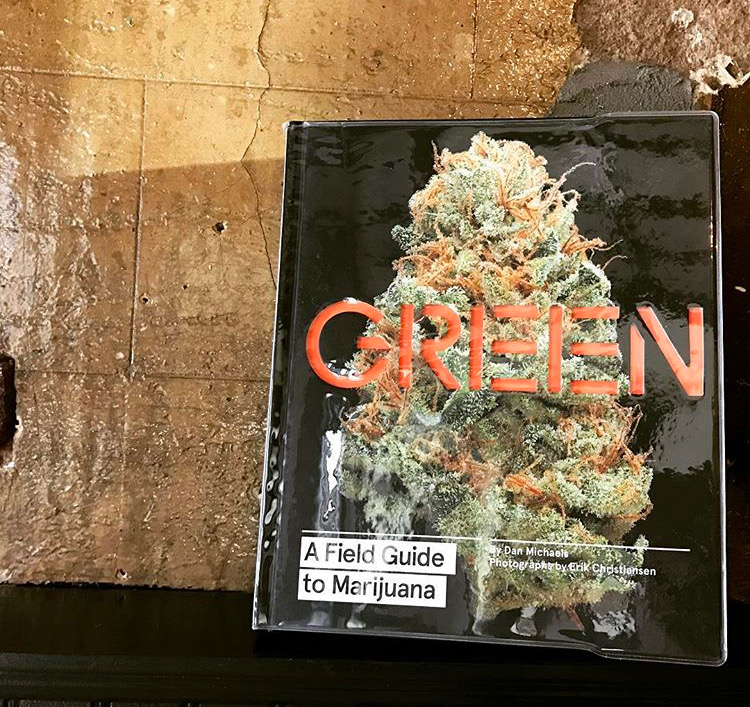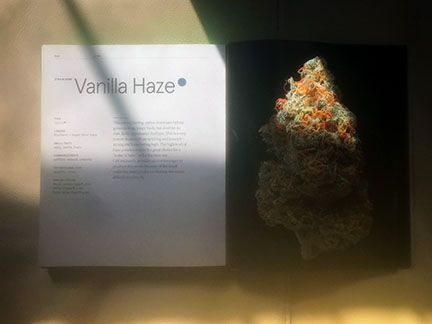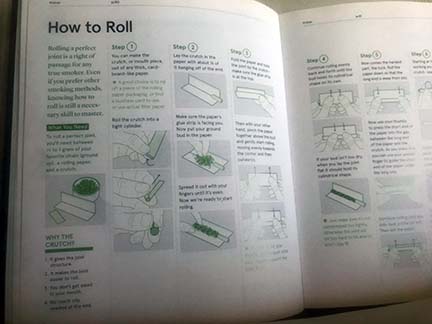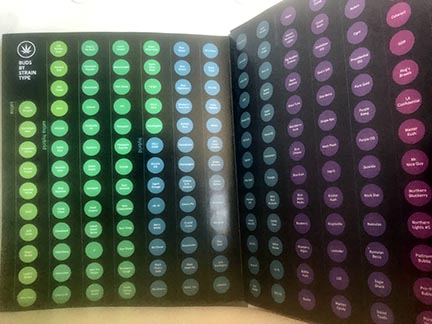
Feb
Reading in the Bathroom | Green: A Field Guide to Marijuana
[responsivevoice_button voice=”UK English Female” buttontext=”Listen to Post”]
In the summer of 1989, before my parents bought our house, my father and I visited the family that would sell their home to us. They were a Greek family that, maybe due to a “change in the neighborhood,” decided to move out of the increasingly-black middle-class Sherman Park neighborhood on Milwaukee’s Northside. But they weren’t uptight. Even as an eight-year-old, I could tell these were “our people.” They were very laid-back and extraordinarily welcoming.
Months after we moved in, we discovered in one of the back rooms a parting gift left for us: A large planter with a few marijuana leaves. Apparently, the family picked up on the fact that — like them — my parents were potheads.
”I have to wonder if maybe I don't know as much about marijuana as I think I do.
There’s an unspoken understanding among people who smoke marijuana, where they recognize one another within a few conversations or observations. I guess that’s how you have to operate in a country where marijuana possession is still illegal. You have to remember, this was the late 1980s.
Growing up in a household where marijuana was used as self-medication to treat anxiety and trauma, I thought I knew everything one needed to know about smoking: Use Tops, get a dime bag from a neighbor you trust and make sure it has no stems, no seeds.
I’m not a regular marijuana consumer. Between my love of cooking, my shoe collection, and my travel budget, I figured I have enough vices. But I live in D.C., where recreational marijuana use is legal. And in states like California, Colorado, and Oregon, recreational marijuana is accessible with a government-issued I.D. I have to wonder if maybe I don’t know as much about marijuana as I think I do.
I picked up a copy of Green: A Field Guide to Marijuana a few years ago after an AIGA DC Design Continuum presentation by Partner-in-Charge at Pentagram and designer of the book, Eddie Opara. He also admitted to not being a consumer himself. But he was proud of the work he put into the design and layout.
”Growing up in a household where marijuana was used as self-medication to treat anxiety and trauma, I thought I knew everything one needed to know about smoking: Use Tops, get a dime bag from a neighbor you trust and make sure it has no stems, no seeds.
When it comes to learning about marijuana, you can’t come in with a lot of stigmas or stereotypes. You wind up operating from a place of fear. Thankfully, the guide starts with a primer section that covers what composes a marijuana leaf, smoking options, how to roll a joint, and addresses the many myths about marijuana use: It kills brain cells, and is a highly-addictive gateway drug.
Green:… also teaches readers what to expect out of good weed. While of course, there should be no stems or seeds, the buds should be dense and tender. Not dry and faded. The seller should not offer it to you crumbled in a plastic bag. It should be well-handled, and well-kept. Ideally in a glass or ceramic container. And if you think it stinks, it’s likely because you’re around a very common, likely poorly-kept strain of marijuana.

Green:… has humbled me by what I don’t know. All this time, my friends and family have been consuming low-grade weed.
After that, it jumps right into an alphabetized glossary of the various cannabis strains in existence. Each strain features a profile of its type (sativa, indica, or hybrid), its smell/taste, and common effects. I’m currently obsessed with getting my hands on the very rare Vanilla Haze, with its spicy, vanilla, fruity smell and “wake ‘n’ bake” daytime use.
”Learning about marijuana is a lot like learning about wine. Just as there are different kinds of grapes and growing methods, there are social rules of consumption and an expectation that it should be handled responsibly.
Each strain is also accompanied by a full-page image of the bud set to a black background. If you flip pages from the left like me (shoutout to Southpaws!) you’ll find yourself fascinated by the beauty of the buds.
The one thing I don’t find particularly useful is the color-coded spectrum guide that goes from sativa to indica used throughout the guide. When I read about each strain, I can’t quite keep up with what those little color-coded dots mean. I find myself more interested in the flavor and mood descriptions. But I do find the spectrum useful toward the back of the book as a glossary.
What might have been helpful is to see a map illustrating which region of the world each strain originates from. That would give me an idea of where these buds started, and how that region defines its characteristics.
Learning about marijuana is a lot like learning about wine. Just as there are different kinds of grapes and growing methods, there are social rules of consumption and an expectation that it should be handled responsibly.
Green: A Field Guide to Marijuana taught me to smoke ’em if you got ’em. If not, learn how to.
Reading in the Bathroom is a book review series by IDSL. Reading is obviously not done in the bathroom exclusively. Sometimes it’s on a park bench, outdoor cafe, or on the train. But the best reading is done in the bathroom.






